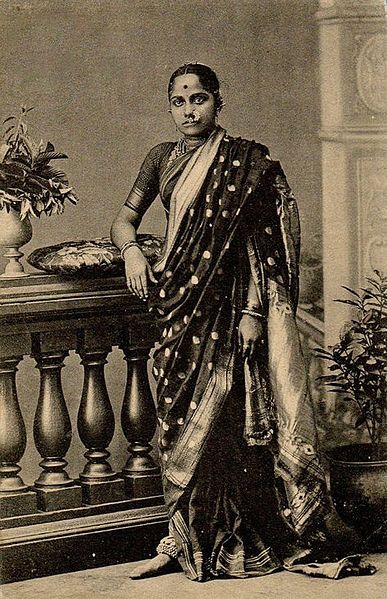
Paithani is a variety of sari, named after the Paithan region in Maharashtra a state in India, where they are woven by hand. Yeola is another center for weaving Paithani in Maharashtra. Made from very fine silk, it is considered as one of the richest saris in Maharashtra. Paithani evolved from a cotton base to a silk base. Silk was used in weft designs and in the borders, whereas cotton was used in the body of the fabric. Present day Paithani has no trace of cotton.
The art is said to be more than 2000 years old, developed in the then splendid city of Pratishthan ruled by the legendary Satavahanas In the far past it had been an international trade centre for silk and zari. Paithan was the capital of the Satavahanas dynasty (200 B.C.) and used to export cotton and silks to the Roman Empire. This technique of tapestry is one of the most ancient methods of creating Paithani with weaving in a multiple weft threads of different colours. Later accounts suggest in the 18th century the silk was imported from China.
The Marathas extended their patronage to this textile activities . The Peshwas in the 18th century had a special love for paithani textiles and it is believed that Madhavrao Peshwa even asked for the supply of asavali dupattas( stoles) in red, green, saffron, pomegranate and pink colours.
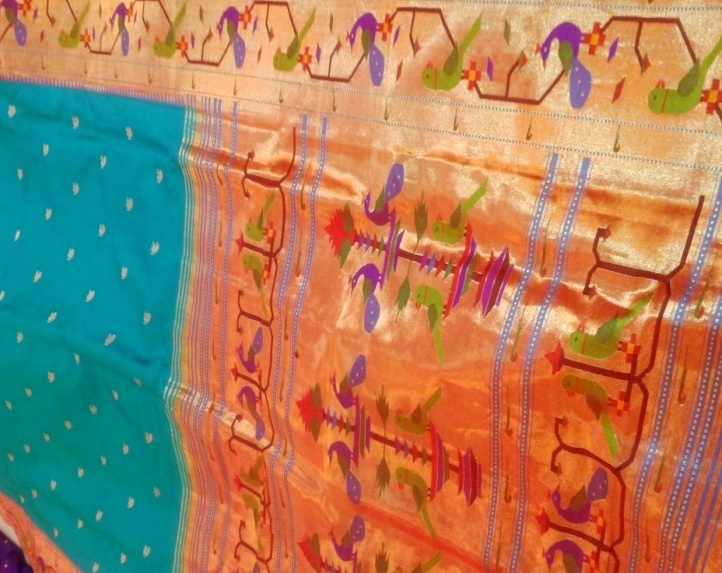
In the days of Peshwas, the borders and the pallu were made of pure gold mixed with copper to give it strength. The combination was spun into a fine wire called the zari. In recent times, zari is made of silver, coated with gold plating. The borders are created with interlocked weft technique either with coloured silk or zari. In the border woven with a zari, ground coloured silk patterns are added as supplementary weft inlay against the zari usually in the form of flower or a creeping vine.
Even if a very good weaver has woven the main body, a master weaver is needed for the intricate inlay border paths. The borders and the pallu are woven in zari regardless of the colour of the sari.
Weaving techniques
Paithani saris are silks in which there is no extra weft forming figures. The figuring weave was obtained by a plain tapestry technique. There are three techniques of weaving.
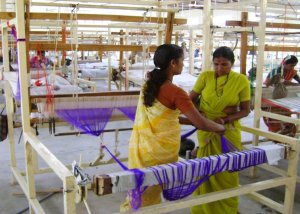
Split tapestry weave – the simplest weave where two weft threads are woven up to adjacent warp threads and then reversed. The warp threads are then cut and retied to a different colour.
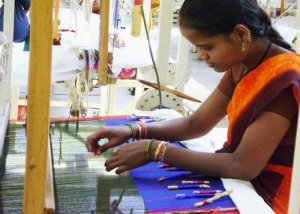
Interlocking method – two wefts are interlocked with each other where the colour change is required. The figuring weft is made of a number of coloured threads, weaving plain with warp threads and interlocked on either side with the grounds weft threads are invariably gold threads which interlock with the figure weft threads, thus forming the figure. This system of interlocking weaves, known as kadiyal, is done so that there are no extra floats on the back of the motif thus making the design nearly reversible.
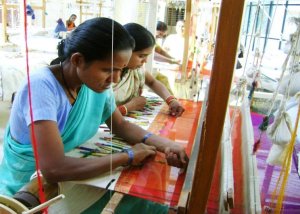
Dobe-tailing method – two threads go around the same warp, one above the other, creating a dobe-tailing or tooth-comb effect. Weaving could take between 18 to 24 months, depending upon the complexity of the design. Today there are many weavers who are working for the revival of this treasured weave.
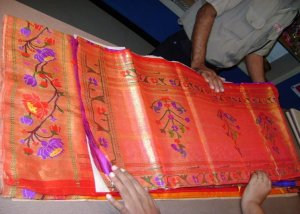
Classification by Weaving
• Kadiyal border sari (Warp and weft of the border are of the same color, body has different colors for warp and weft)
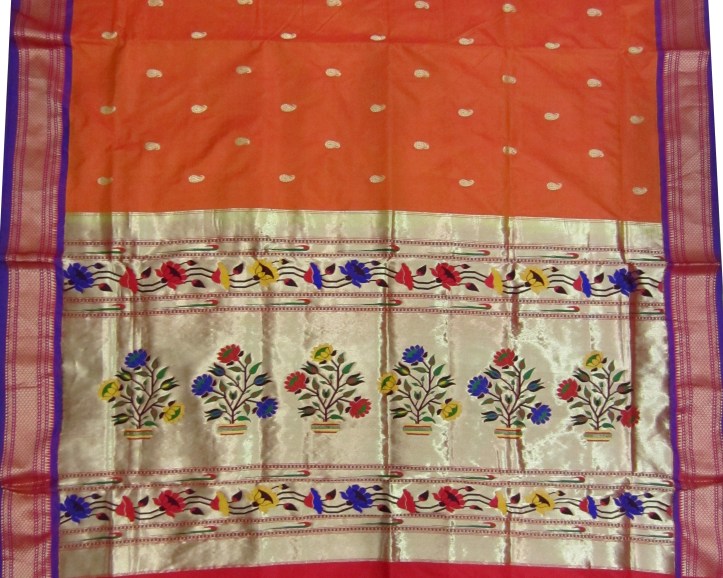
• Kad/Ekdhoti (Single shuttle used for weaving of weft and colors of warp yarn different from that of weft yarn)
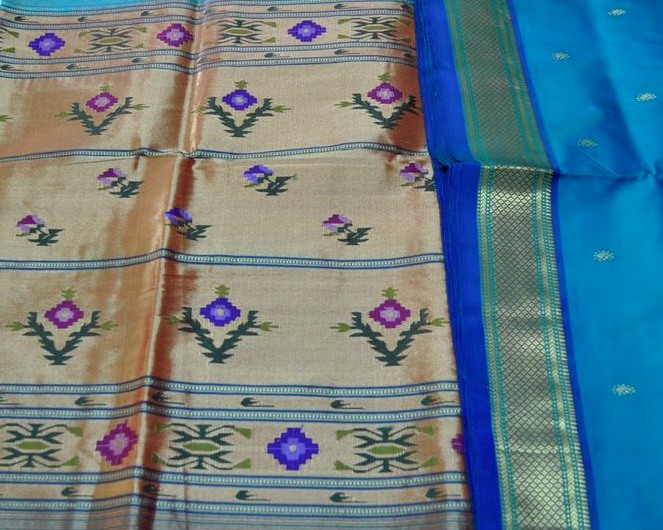
Classification by Color
• Kalichandrakala (Black sari with red border)
• Raghu (Parrot green sari)
• Shirodak (Pure white sari)
Classification by Motif
• Bangadi Mor (Peacock in a bangle or in a bangle shape, woven in pallu)
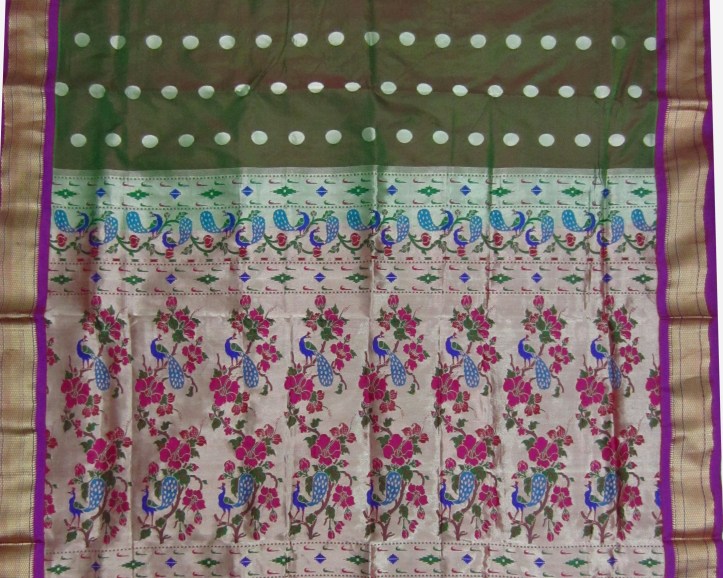
• Munia brocade (Parrots woven on the pallu as well as in border)
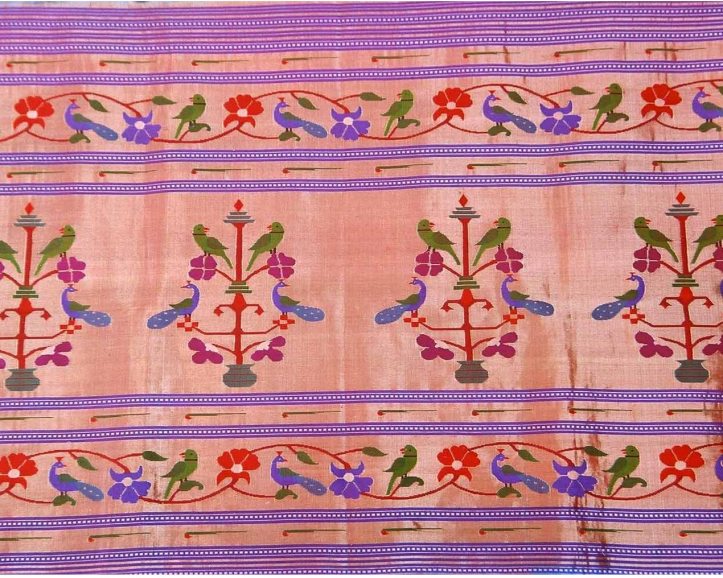
• Lotus brocade (Lotus motifs used in pallu and maybe border) Since the Patithan region is quite close to the Ajanta caves, one can find the influence of the Buddhist paintings in the motifs used on the Paithani sarees.
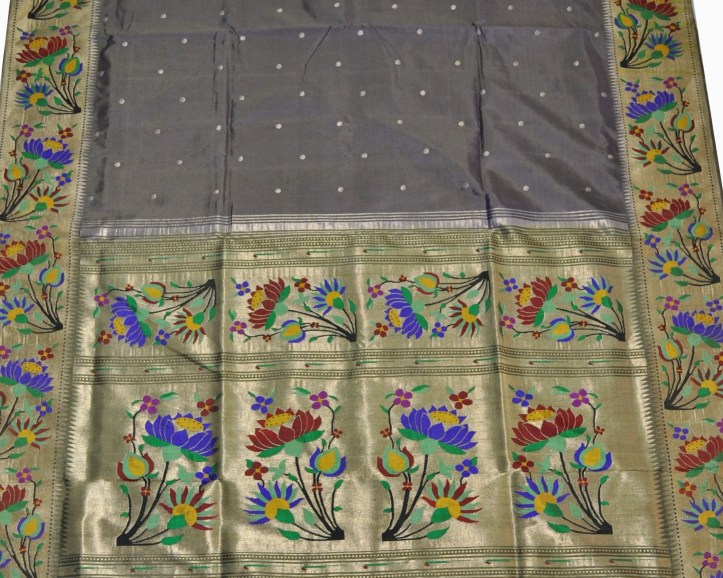
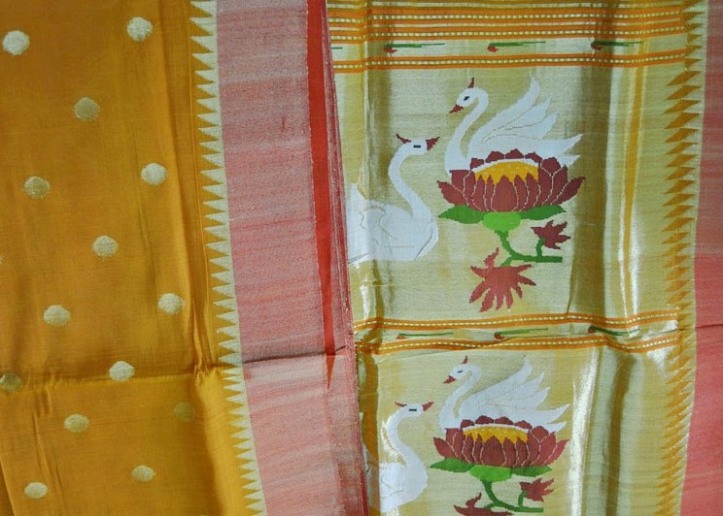
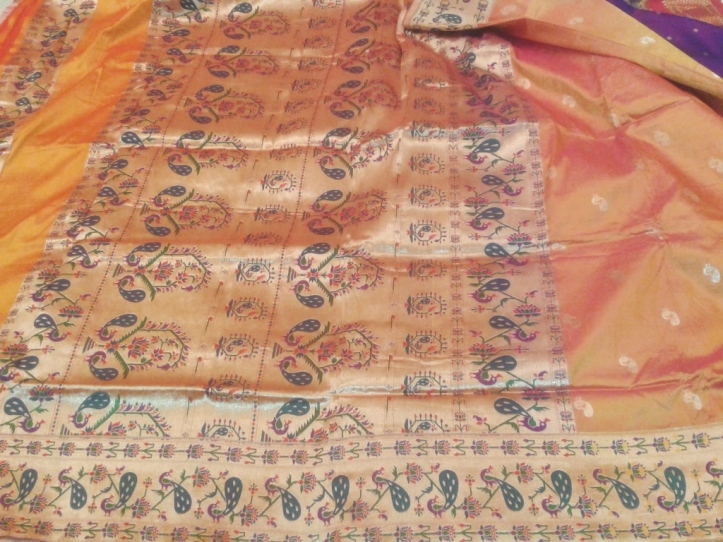
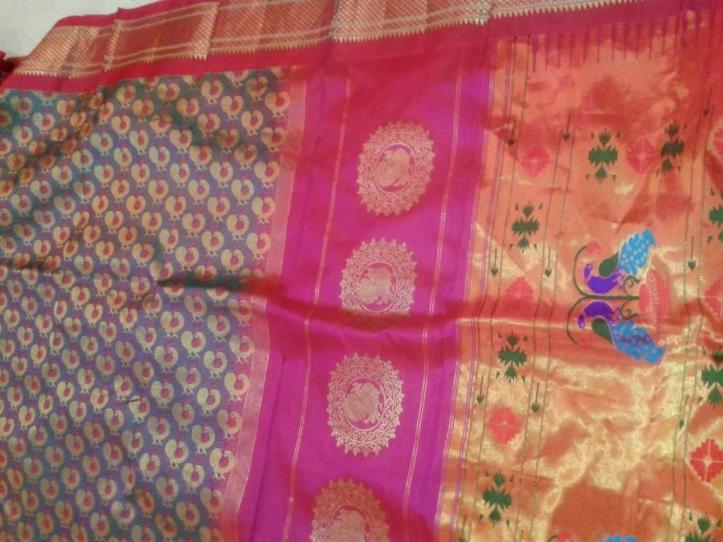
Photography courtesy for weaving technique and information IDC IIT Bombay.
Other Posts in this series:
Indian Textiles: The Sari
https://playcreatelearn.wordpress.com/2012/08/14/indian-textiles-the-sari/
Indian Textiles: Cotton Sari
https://playcreatelearn.wordpress.com/2012/07/28/indian-textiles-cotton-sari/
Indian Textiles: History
https://playcreatelearn.wordpress.com/2012/07/24/indian-textiles-part-1/
Paithani Sarees are considered to be the richest sarees ever made in Indian history, made in the small town Paithan in Maharashtra are the most exquisite and finest silk sarees in the country today.paithani sarees
This is a very interesting blog on Paithani Silk Sarees . Traditional Paithani sarees can wear on special occasions.
Thank you
I have always been in the awe of these paithani silk sarees from Maharashtra. These paithani sarees come in so many varieties and look so traditional
Hi,
I am already in India. Can you please send me the name and address of looms where I can get authentic paithanis? You asked for my email id. Here it is: madhumeetasaha@gmail.com. I will appreciate your help in the matter. I plan to wear the saree for an upcoming very special occasion.
Hi, apologies for the late reply, the looms are in Yeola, which is near Nashik. There are a number of looms there you can visit.
Thanks for sharing such great article on Paithani sarees. Traditional Paithani silk sarees are used for special occasions.
Hi,
I am planning to travel to Yeola for seeing this art and buying a saree. Please let me know the address of the loom where I can buy the saree directly and get custom made if requirement be.
Hi
This was a very interesting read. I wish you said a little more about the places where we can get some of these exquisite sarees. For instance, I would be very interested to know where to find some of the sarees you have posted pictures of, especially the one with “Unusual kuiri (mango) motif integrated with peacocks. Body of the sari has gold peacock boti.”
I take avid interest in handicraft; sarees, traditional one especially, fascinates me. I wish to learn more about Paithani.
Thank you for your help.
Madhumita
Thank you for the interest, These can be found in a town called Yeola, close to Nashik. There are looms where you can get a custom made pattern too. If you are travelling to Yeola, I can give you the contact.
Thank you!. I shall let you know. I intend to visit the place towards the end of the year. For custom made pattern do I have to get in touch before I visit? In that case, how do I get in touch with these weavers?
Thank you again for your help and time
Madhumita
If you send me your email address I can send you the looms email, get in touch with them and yes, it takes anywhere from 3 to 6 months to get a custom made design.
very informative. Thank you.
Thank you for visiting and appreciation.